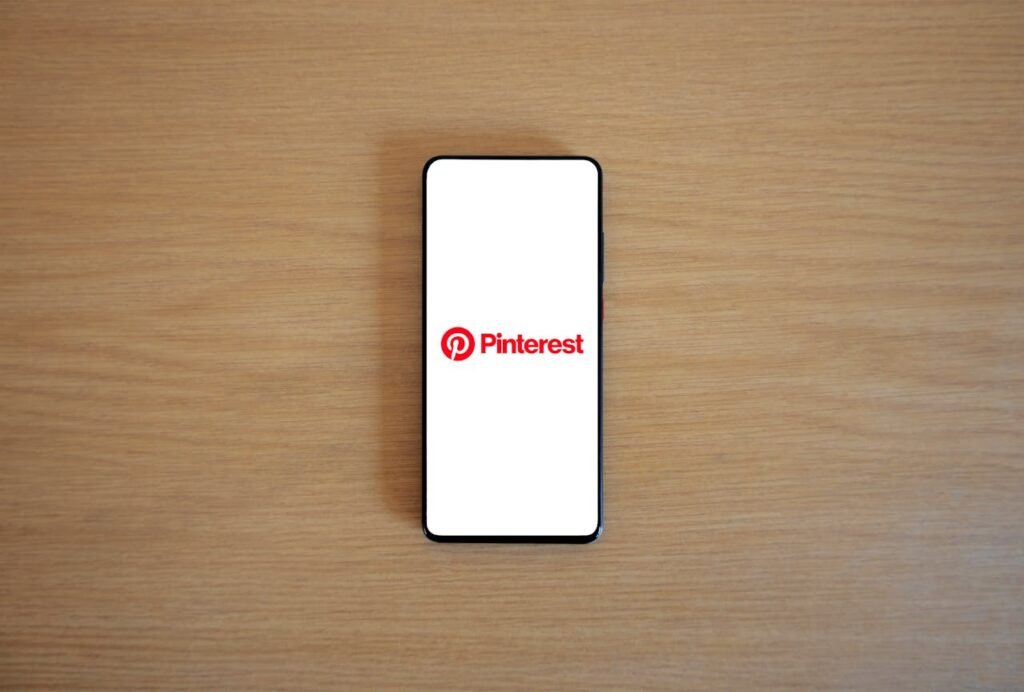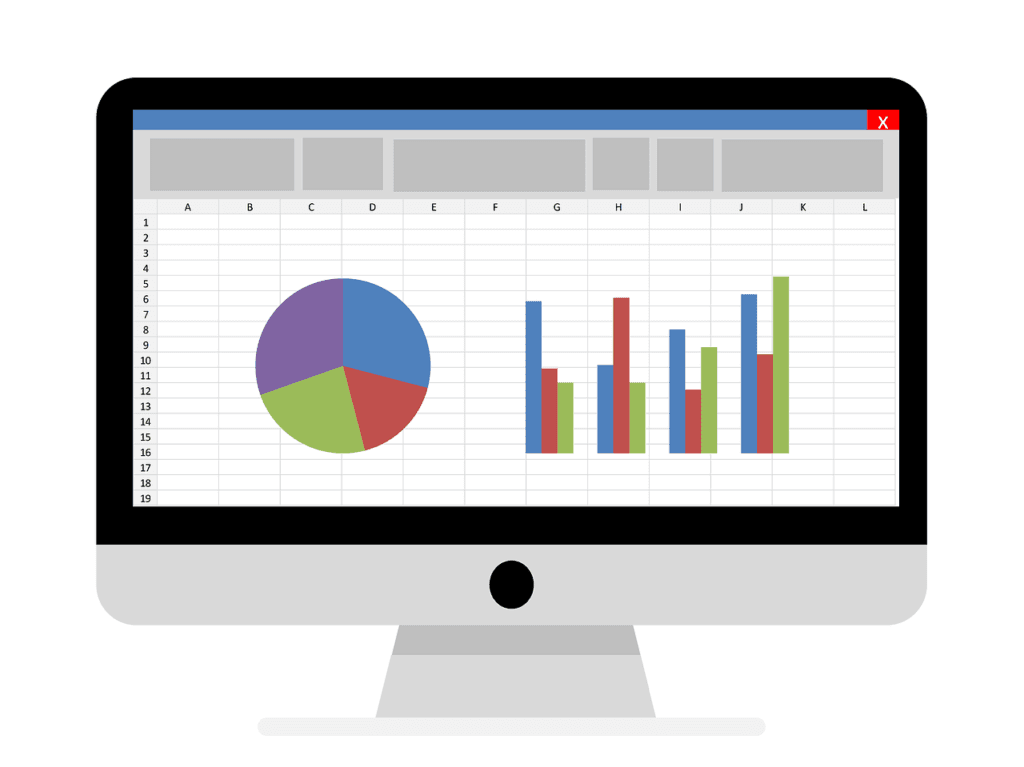Women’s History Month is a time to celebrate the contributions, achievements, and stories of women throughout history. It’s an opportunity to honor the trailblazers who have paved the way and to inspire future generations. Using social media to highlight these stories can engage your audience and show your support for gender equality. In this article, we’ll explore effective social media ideas and tips to celebrate Women’s History Month.
Sharing Inspiring Stories

Sharing inspiring stories during Women’s History Month can deeply engage your audience and reinforce your brand’s commitment to gender equality. For startup founders, this strategy can also enhance brand loyalty and create meaningful connections with your audience. Here’s how to elevate this approach with strategic and actionable advice:
Collaborating with Influential Women
Collaborate with influential women in your industry to share their stories on your platform. Reach out to female leaders, entrepreneurs, and innovators who can provide valuable insights and inspiration. These collaborations can take the form of interviews, guest blog posts, or video features.
When selecting collaborators, consider individuals whose stories resonate with your brand values and audience. Approach these influencers with a clear proposal, outlining how the collaboration can benefit both parties. Provide them with a platform to share their experiences, challenges, and achievements, highlighting their journey in a way that inspires your audience.
For example, feature an interview series with female tech entrepreneurs discussing their path to success, the obstacles they overcame, and their advice for other women in the industry. Promote these interviews across your social media channels, and create a dedicated section on your website to showcase their stories.
Leveraging User-Generated Content
Encourage your audience to share their own inspiring stories by creating a user-generated content (UGC) campaign. Ask your followers to share personal anecdotes, achievements, or tributes to women who have influenced their lives. Use a campaign-specific hashtag to aggregate these stories and make them easily discoverable.
To incentivize participation, consider offering a prize or recognition for the most compelling stories. Feature selected stories on your social media channels and website, giving credit to the contributors. This not only provides diverse perspectives but also fosters a sense of community and engagement.
For example, launch a campaign with the hashtag #HerStoryMatters, inviting followers to share stories about women who have made a significant impact in their lives. Highlight these stories through weekly posts, and create a digital gallery on your website to celebrate these contributions.
Creating Themed Content Series
Develop a themed content series that runs throughout Women’s History Month, focusing on different aspects of women’s achievements and contributions. Each week, cover a specific theme such as women in science, women in arts, women in leadership, or women in activism.
Plan and schedule your content in advance, ensuring a consistent and cohesive narrative. Use a mix of content formats, including blog posts, videos, infographics, and social media posts, to keep the series engaging. Promote each week’s theme through teasers and highlights, encouraging your audience to follow along and participate.
For example, during the first week, share stories and achievements of women scientists like Rosalind Franklin and Jane Goodall. The second week could focus on women artists, featuring Frida Kahlo and contemporary female artists. Engage your audience by asking them to share their favorite women in these fields using your campaign hashtag.
Partnering with Educational Institutions
Partner with educational institutions such as universities, schools, and research centers to share stories of female scholars and researchers. Highlight the contributions of women in academia and their impact on various fields of study. This can add an educational dimension to your campaign and provide authoritative content.
Reach out to institutions and propose collaboration ideas, such as featuring profiles of notable female faculty members or highlighting student research projects led by women. Share these stories through blog posts, interviews, and video features, providing a platform for these scholars to share their work and inspire others.
For example, collaborate with a university to feature interviews with female professors discussing their research and its impact. Share these interviews on your social media channels and website, and promote them through the university’s networks to reach a broader audience.
Utilizing Interactive Storytelling
Enhance your storytelling by using interactive formats such as Instagram Stories, polls, and quizzes. Interactive content can engage your audience more deeply and encourage them to participate in the conversation.
Create Instagram Stories that feature a series of posts about influential women, using interactive elements like polls to ask your audience about their knowledge of these figures. Use quizzes to test their knowledge about women’s history and share the results to encourage further learning and engagement.
For example, create an Instagram Story series titled “Guess the Trailblazer,” where you share clues about a famous woman and reveal the answer at the end. Include polls asking your audience if they knew the answer and share additional information about the woman’s achievements.
By strategically sharing inspiring stories, startup founders can create a dynamic and engaging Women’s History Month campaign that not only celebrates women’s contributions but also strengthens their brand’s connection with their audience. This approach fosters a supportive community, encourages participation, and highlights the importance of gender equality in a meaningful way.
Creating Educational Content
Educational content plays a crucial role in celebrating Women’s History Month, offering valuable insights and fostering a deeper understanding of women’s contributions throughout history. For startup founders, creating strategic and actionable educational content can position your brand as an informed and supportive ally. Here’s how to effectively create and share educational content:
Developing In-Depth Articles and Blog Posts
Creating detailed articles and blog posts on significant topics related to women’s history can attract and educate your audience. Choose themes that resonate with your brand and audience, such as the evolution of women’s rights, profiles of influential women in your industry, or analyses of gender equality progress.
Conduct thorough research to ensure accuracy and depth. Include quotes, anecdotes, and lesser-known facts to make the content engaging and informative. End each article with a call to action, encouraging readers to share their thoughts, learn more, or support relevant causes.
For example, write an article titled “The Pioneers of Tech: Women Who Shaped the Industry,” detailing the contributions of women like Ada Lovelace, Grace Hopper, and modern tech leaders. Share this article across your social media channels, and encourage your followers to read and discuss it.
Creating Video Documentaries and Interviews
Videos are a powerful medium for storytelling and education. Produce short documentaries or interviews that highlight the achievements of women in various fields. Use high-quality visuals and compelling narratives to engage your audience.
Interview influential women and experts on gender equality topics. These interviews can provide firsthand insights and personal stories that resonate deeply with viewers. Share these videos on platforms like YouTube, Instagram, and LinkedIn to reach a broad audience.
For example, create a documentary series titled “Women in Leadership,” featuring interviews with female CEOs, entrepreneurs, and activists. Each episode can focus on their journey, challenges, and the impact they’ve made. Promote these videos through teasers and highlights on social media to generate interest and engagement.
Designing Interactive Infographics and Visual Content
Interactive infographics and visual content can make complex information more accessible and engaging. Design infographics that highlight key statistics, timelines, or significant milestones in women’s history. Use interactive elements to encourage user engagement.
For instance, create an interactive timeline of women’s suffrage movements worldwide. Users can click on different countries to learn about key events and figures in the fight for women’s voting rights. Share these infographics on social media and embed them on your website to drive traffic and engagement.
Hosting Educational Webinars and Workshops
Webinars and workshops offer an interactive platform for learning and discussion. Host educational sessions on topics related to women’s history, gender equality, and women’s contributions to your industry. Invite experts and thought leaders to speak and share their insights.
Promote these events through your social media channels, email newsletters, and website. Encourage your audience to register and participate. After the event, share recordings and key takeaways to extend the reach and impact.
For example, host a webinar titled “Breaking Barriers: Women in STEM,” featuring female scientists and engineers discussing their experiences and the future of women in STEM fields. Promote the webinar in advance and share the recording and highlights afterward to engage a wider audience.
Collaborating with Educational Institutions
Partner with educational institutions such as universities, schools, and research centers to co-create and share educational content. These collaborations can lend credibility to your content and provide access to expert knowledge and resources.
For example, collaborate with a university’s women’s studies department to create a series of articles or videos on the history of women’s rights movements. Share these collaborative projects on your social media platforms and website, highlighting the partnership and the expertise involved.
Launching Social Media Educational Campaigns
Develop social media campaigns that focus on educating your audience about women’s history. Create a series of posts that each cover a different topic, such as significant women in history, the evolution of women’s rights, or current issues facing women globally.
Use a mix of content formats, including images, videos, and text, to keep the campaign engaging. Promote the campaign with a unique hashtag and encourage your audience to share their own insights and learnings.
For example, launch a campaign titled “#HerStoryUnfolds,” with daily posts throughout Women’s History Month. Each post can feature a different woman or milestone in women’s history, along with educational content and calls to action. Engage your audience by asking them to share what they’ve learned or their favorite stories.
Providing Resources and Further Reading
Compile and share lists of recommended books, articles, documentaries, and other resources related to women’s history and gender equality. These resources can help your audience delve deeper into the topics and continue their learning journey.
Create a dedicated section on your website where these resources are easily accessible. Promote this resource hub on your social media channels, encouraging your audience to explore and share the materials.
For example, create a blog post titled “Essential Reading for Women’s History Month,” listing influential books and articles on women’s history and gender equality. Share this post widely, and update it regularly with new recommendations.
By strategically creating and sharing educational content, startup founders can play a pivotal role in celebrating Women’s History Month and promoting gender equality. This approach not only educates and engages your audience but also reinforces your brand’s commitment to supporting and uplifting women.
Engaging Your Audience
Engaging your audience during Women’s History Month can help foster a sense of community and encourage active participation in celebrating and learning about women’s contributions. As a startup founder, using strategic and actionable methods to engage your audience can enhance their connection with your brand and amplify the impact of your campaign. Here are some unique strategies to consider:
Interactive Polls and Surveys
Interactive polls and surveys can be a fun and informative way to engage your audience. Use these tools to gather opinions, share insights, and stimulate conversations about women’s history and gender equality.
Create polls on social media platforms like Instagram, Twitter, and LinkedIn, asking questions related to women’s history. For example, you could ask, “Who is your favorite female historical figure?” or “What’s the most significant achievement by women in the last century?” Share the results with your audience and provide additional information or context about the poll topics.
Surveys can delve deeper, allowing you to gather more detailed feedback and insights. Use surveys to understand your audience’s knowledge about women’s history, their perspectives on gender equality, and what they would like to learn more about. Analyze the responses and share the findings with your audience, along with educational content that addresses their interests and knowledge gaps.
Hosting Virtual Panel Discussions
Virtual panel discussions bring together experts and influencers to discuss topics related to women’s history and gender equality. These events can provide valuable insights and foster meaningful conversations among your audience.
Organize panel discussions with diverse speakers who can offer various perspectives on relevant issues. Promote the event through your social media channels, email newsletters, and website, encouraging your audience to register and participate. Use platforms like Zoom, Facebook Live, or YouTube Live to host the discussions.
During the panel, allow time for audience questions and interaction. This can make the event more engaging and informative. After the event, share key takeaways, highlights, and recordings to keep the conversation going and reach a broader audience.
Creating Storytelling Campaigns
Storytelling campaigns can captivate your audience and create a deeper emotional connection with your brand. Develop campaigns that highlight personal stories of women’s achievements, struggles, and contributions.
Invite your audience to share their stories related to women who have inspired them. Use a campaign-specific hashtag to aggregate these stories and make them easily discoverable. Feature the most compelling stories on your social media platforms, website, and other marketing channels.
For example, launch a campaign titled “Her Story, Our Future,” where followers share stories about women who have impacted their lives. Encourage participants to include photos, videos, or quotes to make their stories more engaging. Highlight these stories regularly to celebrate diverse experiences and perspectives.
Gamifying Engagement
Gamification can make learning about women’s history more interactive and enjoyable for your audience. Develop quizzes, trivia games, or challenges that test your audience’s knowledge and encourage participation.
Create a quiz about women’s history with questions ranging from well-known facts to lesser-known trivia. Share the quiz on your social media platforms and website, and encourage your audience to test their knowledge. Offer incentives like digital badges, certificates, or small prizes for high scores or participation.
For example, develop a “Women’s History Month Trivia Challenge” where participants answer daily questions about influential women and their achievements. Track participation and engagement, and recognize top participants with shout-outs or prizes.
Launching Social Media Contests
Social media contests can drive engagement and excitement among your audience. Organize contests that encourage followers to create and share content related to Women’s History Month.
Design contests that align with your campaign goals and values. For instance, you could ask participants to create a short video or graphic celebrating an influential woman, or to write a post about how a particular woman has inspired them. Use a unique hashtag to collect entries and make it easy for others to find and engage with the contest.
Promote the contest through all your social media channels, providing clear instructions and deadlines. Offer attractive prizes such as gift cards, products, or exclusive experiences to incentivize participation. Feature the best entries on your platforms, giving recognition to the creators and amplifying their stories.
Partnering with Other Brands or Influencers
Collaborating with other brands or influencers can expand your reach and enhance your engagement efforts. Partner with organizations or individuals who share your commitment to celebrating women’s achievements and promoting gender equality.
Develop joint campaigns that leverage the strengths and audiences of both partners. For example, co-host virtual events, create collaborative content, or run joint social media campaigns. These partnerships can bring fresh perspectives and new audiences to your campaign.
Reach out to potential partners with a clear proposal outlining the benefits of the collaboration and how it aligns with their values and goals. Highlight the mutual value and impact of working together to celebrate Women’s History Month.
By employing these strategic and actionable engagement strategies, startup founders can create a vibrant and interactive celebration of Women’s History Month. These approaches not only engage your audience but also reinforce your brand’s commitment to gender equality and support for women’s contributions.

Showcasing Female Employees
Highlighting the achievements and contributions of female employees during Women’s History Month not only celebrates their work but also strengthens your company culture and brand image. For startup founders, strategically showcasing female employees can foster a sense of pride and unity within the team while demonstrating your commitment to gender equality. Here’s how to do it effectively:
Creating Employee Spotlight Series
Develop an employee spotlight series that features different female employees throughout Women’s History Month. Each spotlight can include a brief interview, personal anecdotes, and professional achievements. Share these spotlights on your social media platforms, website, and internal communications.
Start by identifying female employees across various departments and roles. Highlight their unique contributions, career journeys, and any special projects they’ve worked on. This not only recognizes their hard work but also provides a diverse representation of women within your company.
For instance, you could feature an engineer who has led a significant product development project, a marketer who has successfully launched a major campaign, or a customer service representative who has consistently provided exceptional support. Share their stories with engaging visuals and quotes to make the content relatable and inspiring.
Hosting Employee-Led Webinars and Workshops
Empower your female employees to share their expertise and experiences by hosting employee-led webinars and workshops. These sessions can cover a range of topics, from industry-specific knowledge to personal development and leadership skills.
Encourage female employees to lead sessions on subjects they are passionate about or have significant experience in. Promote these webinars and workshops through your social media channels and internal networks, inviting both employees and the public to participate.
For example, a female project manager could lead a workshop on effective project management techniques, sharing her insights and best practices. These sessions not only highlight the employee’s expertise but also provide valuable learning opportunities for your audience.
Featuring Employee Stories in Newsletters and Blogs
Incorporate female employee stories into your company newsletters and blog posts. These platforms allow for more in-depth storytelling and can reach a broad audience, including customers, partners, and other stakeholders.
Write detailed articles or blog posts that profile female employees, exploring their career paths, challenges they’ve overcome, and their contributions to the company’s success. Include personal anecdotes and reflections to add depth and authenticity to the stories.
For example, a blog post could feature a female executive’s journey to leadership, discussing the obstacles she faced, the strategies she used to succeed, and her vision for the future. Sharing these stories in newsletters and blogs not only celebrates individual achievements but also reinforces your company’s commitment to supporting women in the workplace.
Organizing Social Media Takeovers
Organize social media takeovers where female employees share their day-to-day experiences, insights, and stories directly with your audience. This provides a behind-the-scenes look at your company and allows employees to connect with followers in a personal and engaging way.
Plan takeovers in advance and create a schedule that features different employees throughout Women’s History Month. Provide guidelines and support to ensure the content aligns with your brand’s message and values.
For instance, a female software developer could take over your Instagram account for a day, sharing her daily routine, projects she’s working on, and her thoughts on working in tech. These takeovers can humanize your brand and showcase the diversity and talent within your team.
Celebrating Team Achievements
In addition to individual spotlights, celebrate team achievements that highlight the contributions of female employees. Share stories about successful projects, milestones, or initiatives led by women within your company.
Create posts that recognize the collective efforts of teams and highlight the roles played by female members. Use quotes and testimonials from team members to add authenticity and provide multiple perspectives.
For example, share a story about a product launch that was driven by a team of female engineers and marketers. Highlight their collaborative efforts, the challenges they overcame, and the impact of their work. Celebrating team achievements can foster a sense of pride and unity while showcasing the importance of diversity in achieving success.
Encouraging Peer Recognition
Encourage peer recognition by creating opportunities for employees to acknowledge and celebrate each other’s achievements. This can be done through internal platforms, social media shout-outs, or dedicated recognition events.
Implement a peer recognition program where employees can nominate their colleagues for their contributions and achievements. Share these nominations and stories on your social media channels and internal communications to amplify the recognition.
For example, create a weekly “Shout-Out Friday” post on your company’s LinkedIn page, where employees can publicly recognize their peers’ hard work and accomplishments. This not only highlights individual and team efforts but also fosters a supportive and appreciative company culture.
By strategically showcasing female employees during Women’s History Month, startup founders can create a positive and inclusive workplace culture that values diversity and supports gender equality. These approaches not only celebrate the contributions of women but also enhance your brand’s reputation and engagement with your audience.
Supporting Women’s Organizations
Collaborating with organizations that support women can amplify your efforts and show your commitment to gender equality. Highlighting these organizations on your social media platforms can raise awareness and encourage your audience to support them as well.
Partnering with Nonprofits
Partner with nonprofits that focus on women’s issues, such as those supporting women’s education, healthcare, or economic empowerment. Collaborate on campaigns or events and promote these partnerships on your social media channels.
For example, you could partner with a nonprofit that provides scholarships to women pursuing higher education. Share stories of scholarship recipients, highlight the impact of the nonprofit’s work, and encourage your followers to donate or get involved.
Fundraising Campaigns
Organize fundraising campaigns to support women’s organizations. Use your social media platforms to promote these campaigns, share information about the organizations, and highlight how donations will be used. Engaging your audience in these campaigns can create a sense of collective action and purpose.
You could host virtual events, such as webinars or live streams, where a portion of the proceeds go to a women’s organization. Promote these events through engaging posts and stories, and share updates on the progress of the fundraising efforts.
Promoting Women-Owned Businesses
Supporting women-owned businesses is another effective way to celebrate Women’s History Month. Highlighting these businesses on your social media platforms can help them gain visibility and encourage your audience to support them as well.
Featuring Local Entrepreneurs
Feature local women entrepreneurs and their businesses. Share their stories, the products or services they offer, and why you support them. This can be done through interviews, product reviews, or simple shout-outs on your social media channels.
For instance, you could feature a local female-owned bakery, discussing the owner’s journey, the challenges she faced in starting her business, and what makes her bakery unique. Share photos of her products and provide links to her social media and website.
Creating a Women-Owned Business Directory
Create a directory of women-owned businesses and share it with your audience. This can be a valuable resource for your followers and a great way to support women entrepreneurs. Update the directory regularly and encourage your audience to suggest businesses to include.
Promote the directory through engaging posts that highlight different businesses each week. Share testimonials from satisfied customers and encourage your followers to share their experiences with the featured businesses.
Utilizing Hashtags and Social Media Campaigns

Effective use of hashtags and social media campaigns can enhance the visibility and reach of your Women’s History Month content. Engaging campaigns can foster community participation and amplify your message.
Creating a Campaign Hashtag
Develop a unique campaign hashtag that encapsulates the spirit of your Women’s History Month celebration. Encourage your audience to use this hashtag when sharing their own stories, experiences, or support for gender equality.
For example, a hashtag like #WomenWhoInspire or #HerStoryMonth can be used across various social media platforms. Promote the hashtag in all your related posts and encourage your followers to use it, creating a cohesive and recognizable campaign.
Launching Social Media Challenges
Social media challenges can be a fun and interactive way to engage your audience. Create challenges that encourage participation and celebrate women’s achievements. For instance, you could launch a challenge where followers share a photo or story about a woman who has inspired them, using your campaign hashtag.
Promote the challenge with engaging visuals and clear instructions. Share some of the best submissions on your platforms, recognizing the participants and their inspiring stories.
Conclusion
Celebrating Women’s History Month through social media offers a powerful opportunity to honor the achievements of women, educate your audience, and promote gender equality. As a startup founder, strategically leveraging social media can enhance your brand’s reputation and foster a supportive community. By sharing inspiring stories, creating educational content, engaging your audience, and showcasing female employees, you can create a meaningful and impactful celebration.
Each strategy outlined in this article provides a unique way to connect with your audience and highlight the importance of women’s contributions. Whether through personal narratives, interactive content, or educational initiatives, the key is to be authentic, engaging, and supportive.
Read Next:





















